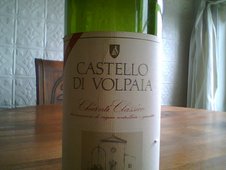
Wine Spectator just published, on-line, one of my periodic interviews of non-industry people talking about wine. This one's with Bryan Batt, who plays art director Salvatore Romano on "Mad Men." Here it is:
Mad Men's Bryan Batt
The actor who portrays the art director in AMC's Mad Men enjoys exploring new wines, along with food pairings
By Robert Simonson
Actor Bryan Batt, 46, plays art director Salvatore Romano in the popular AMC television drama Mad Men, which is set at a New York advertising agency in the early 1960s. The show's cocktail culture is nothing new to Batt, though the seasoned Broadway stage actor, who grew up in New Orleans, also loves wine. These days, he splits his time between Los Angeles, where Mad Men is produced; New York, where he continues to take on the occasional stage assignment; and New Orleans, where he and his partner, Tom Cianfichi, own Hazelnut, a home decor shop on Magazine Street.
Wine Spectator: There are a lot of cocktails consumed on Mad Men. Your character, Salvatore Romano, is one of the few we see drinking wine. I guess Sal, being Italian, would be into wine.
Bryan Batt: Yes, he would like a nice Chianti.
WS: How did you get interested in wine?
BB: My friends own a wine store in New Orleans, and when I'm in town, we're either at their house having dinner or they're at our house having dinner. They bring wine and try to educate me more about what I like. Being able to sit back and really examine a wine and have the vocabulary to tell somebody what you like is wonderful. I used to like a lot of oaky Chardonnays, and they've opened my mind to the coastal California Chardonnays that are crisper and not oaked.
WS: Can you remember a particular wine that really opened your eyes to wine's possibilities?
BB: It was a Far Niente Chardonnay—a classic California Chardonnay, with intense fruit, a bit of spicy oak and a long, rich finish.
WS: Are you generally a red or a white wine man?
BB: I'm usually a white wine person. But I do love a Pinot Noir. I love a good Cabernet.
WS: Have you started to collect?
BB: I don't collect. But I do love, when I'm serving a dinner, asking around and finding a good wine that complements the meal. We have a traditional New Year's Eve dinner. It's been going on for about 10 years. One year [in New York] there was going to be a big snowstorm so we opted to stay home and invited about five couples. Tom ran to the butcher and asked, "What do you have that’s good?" The butcher said, "I have a veal shank. You make osso bucco tonight." Tom came up with a great recipe, and the tradition has lasted. We started in New York, and it's continued in New Orleans. So we always try to find a great wine that will complement osso bucco.








